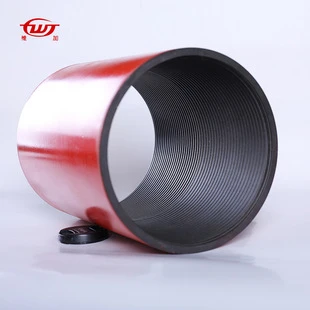- Afrikaans
- Albanian
- Amharic
- Arabic
- Armenian
- Azerbaijani
- Basque
- Belarusian
- Bengali
- Bosnian
- Bulgarian
- Catalan
- Cebuano
- Corsican
- Croatian
- Czech
- Danish
- Dutch
- English
- Esperanto
- Estonian
- Finnish
- French
- Frisian
- Galician
- Georgian
- German
- Greek
- Gujarati
- Haitian Creole
- hausa
- hawaiian
- Hebrew
- Hindi
- Miao
- Hungarian
- Icelandic
- igbo
- Indonesian
- irish
- Italian
- Japanese
- Javanese
- Kannada
- kazakh
- Khmer
- Rwandese
- Korean
- Kurdish
- Kyrgyz
- Lao
- Latin
- Latvian
- Lithuanian
- Luxembourgish
- Macedonian
- Malgashi
- Malay
- Malayalam
- Maltese
- Maori
- Marathi
- Mongolian
- Myanmar
- Nepali
- Norwegian
- Norwegian
- Occitan
- Pashto
- Persian
- Polish
- Portuguese
- Punjabi
- Romanian
- Russian
- Samoan
- Scottish Gaelic
- Serbian
- Sesotho
- Shona
- Sindhi
- Sinhala
- Slovak
- Slovenian
- Somali
- Spanish
- Sundanese
- Swahili
- Swedish
- Tagalog
- Tajik
- Tamil
- Tatar
- Telugu
- Thai
- Turkish
- Turkmen
- Ukrainian
- Urdu
- Uighur
- Uzbek
- Vietnamese
- Welsh
- Bantu
- Yiddish
- Yoruba
- Zulu
Understanding the Importance of Casing Collar in Oil and Gas Applications
Understanding Casing Collars in Well Construction
Casing collars play a fundamental role in the oil and gas industry, particularly during the drilling and completion of wells. These essential components aid in the safe and efficient management of well integrity, ensuring that the operation runs smoothly from start to finish. To grasp the importance of casing collars, it’s essential to understand their function, design, and application in well construction.
What is a Casing Collar?
A casing collar is a thickened section that typically appears on casing pipes at specific intervals. Its purpose is to provide structural support and act as a guide in the drilling process. Casing is necessary for maintaining the integrity of the wellbore, preventing collapse, and isolating different geological formations. The collars serve as junction points where casing strings can be connected or changed, thus enhancing the operational flexibility during drilling.
Functions and Importance
Casing collars serve multiple functions in well construction. First and foremost, they help to define the depth and sections of the well. Each collar is usually marked with specific measurements indicating the bonds of individual casing sections, which allows engineers to monitor and control the depths accurately. This monitoring is critical for ensuring that drilling operations are carried out within regulatory and safety standards.
Additionally, casing collars provide a robust platform for the installation of various equipment, including packers and screens. These instruments are key to managing pressure and safeguarding the well against potential complications, such as fluid migration and loss of well control. The collars also facilitate cementing operations—an essential step in securing the casing and ensuring that it bonds properly with the surrounding geology.
casing collar

Design Considerations
The design of casing collars varies according to specific operational needs. They are typically constructed from high-strength steel to withstand significant amounts of pressure and corrosion, which are common in subsurface environments. The thickness and dimensions of the collars are carefully calculated based on the expected load and the geological conditions of the site. Advanced engineering techniques, including finite element analysis, are often employed to optimize the design for resilience and functionality.
Installation and Best Practices
The installation of casing collars should be conducted with precision to ensure optimal performance. During the drilling process, it is paramount to follow best practices to avoid complications like misalignment or inadequate cement bonding. Proper training and operations management are critical to ensuring safety and efficiency throughout the drilling process.
Regular inspections and maintenance of casing collars post-installation are also vital. Such practices help in early detection of wear and tear due to corrosive elements in the subsurface, which can potentially lead to well integrity issues.
Conclusion
In summary, casing collars are a crucial component in the schematic of well construction within the oil and gas industry. Their unique design and functionality provide stability and guidance, ensuring that drilling operations proceed smoothly and safely. As the industry continues to evolve with advancements in technology, the design and application of casing collars will likely adapt, enhancing their role in ensuring well integrity and operational efficiency. Understanding and implementing best practices around casing collars is essential for all stakeholders involved in well construction, from engineers to field operators, as it directly correlates to the success of drilling operations and the overall safety of the well.
-
Tubing Pup Joints: Essential Components for Oil and Gas OperationsNewsJul.10,2025
-
Pup Joints: Essential Components for Reliable Drilling OperationsNewsJul.10,2025
-
Pipe Couplings: Connecting Your World EfficientlyNewsJul.10,2025
-
Mastering Oilfield Operations with Quality Tubing and CasingNewsJul.10,2025
-
High-Quality Casing Couplings for Every NeedNewsJul.10,2025
-
Boost Your Drilling Efficiency with Premium Crossover Tools & Seating NipplesNewsJul.10,2025







